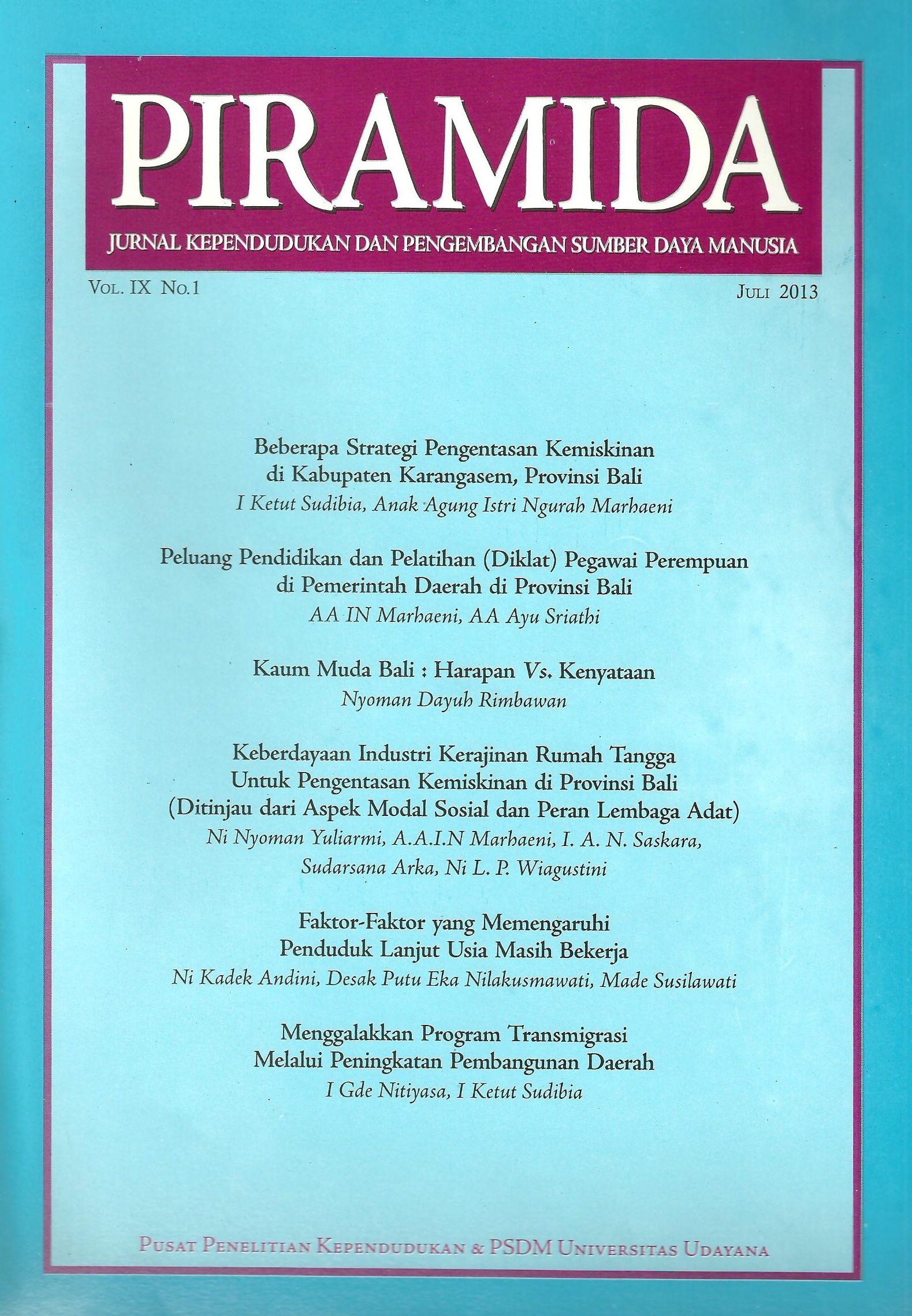KEBERDAYAAN INDUSTRI KERAJINAN RUMAh TANGGA UNTUK PENGENTASAN KEMISKINAN DI PROVINSI BALI (Ditinjau dari Aspek Modal Sosial dan Peran Lembaga Adat)
Abstract
The aims of this research determine : 1) the effect of social capital on the level ofempowerment of the householdhandicraft industryin the province ofBali, 2) the effect of social capital on social, cultural and custom financial institutions roles to empower householdhandicraft industryin the province ofBali,3) the effect oftraditionalviews ofthe role ofinstitutionsof social, cultural, and financialempowermentforhouseholdhandicraft industryin the province ofBali.
Locationswere selected5 districtsby the numberof poor families(Keluarga Sejahtera Satu) (BKKBN 2012)has the mosthouseholdhandicraftindustrial unitsnamely:Karangasem, Bangli, Klungkung, TabananandGianyar regency. The number ofsamplestakenas many as 100units. Datawere collectedby interview, using alist of questionsprepared. The analysis techniqueused isStructural Equation Modeling(SEM) approachPartialLeast Square(PLS).
The research results showed that: 1) Social capital is not proven able to affect household handicraft industryin the province ofBali 2) Social capital positively affect the role of social, cultural and custom financial institutions to empower household handicraft industryin the province ofBali 3) The role of social, cultural and custom financial institutions positively affect household handicraft industry empowerment in the province ofBali.




